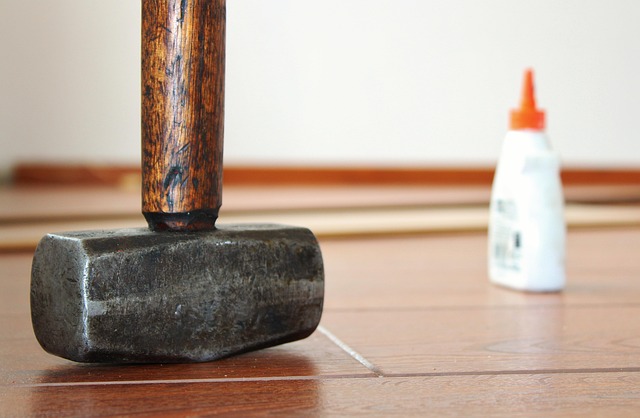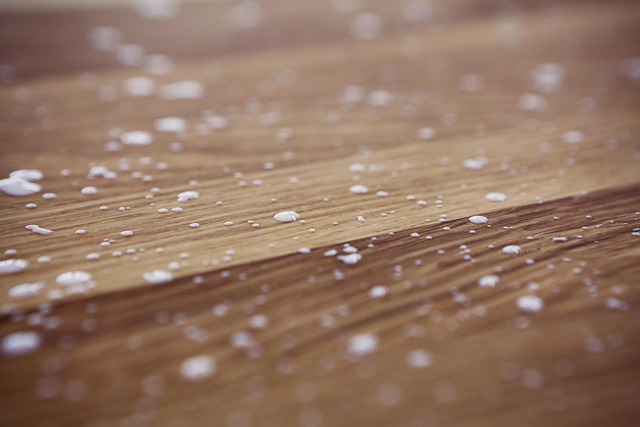A Glue Laminated Beam (glulam) is a high-strength engineered wood beam made by bonding multiple layers of lumber. It offers superior load-bearing capacity, spanning longer distances compared to solid beams, and provides creative design freedom for architects. The key to structural integrity lies in selecting the right adhesive, proper surface preparation, and adherence to industry guidelines. Curing time ensures bond strength, and testing validates performance for safety standards in residential and commercial buildings.
“Discover the power of glue laminate beams for enhanced structural integrity. This comprehensive guide explores the process of fusing multiple lamina into robust, durable beams using adhesive bonding. From understanding the fundamentals of what constitutes a glue laminate beam to selecting the ideal adhesive, preparing surfaces, and applying glue correctly—each step ensures optimal bonding strength. Learn how to cure and test your beams for structural soundness, ensuring a secure and reliable construction solution.”
- Understanding Glue Laminated Beams
- Choosing the Right Adhesive for Strength
- Preparing the Surface and Beam Ends
- Applying Glue Properly for Optimal Bonding
- Curing and Testing the Structured Beam Integrity
Understanding Glue Laminated Beams

A Glue Laminated Beam, or glulam beam, is an engineered structural element created by gluing together multiple layers of dimensional lumber. This process enhances the beam’s strength and stiffness, making it a popular choice for building construction, particularly in modern architectural designs. The laminating process not only improves structural integrity but also allows for longer span capabilities compared to traditional solid beams.
Glulam beams offer excellent properties and performance, including high load-bearing capacity, dimensional stability, and resistance to spanning forces. This makes them a versatile option for architects, enabling creative design possibilities. When considering glulam beam design, various factors come into play, such as span requirements, loading conditions, and aesthetic preferences. To explore these glulam beam span capabilities, glulam beam properties and performance, or discuss glulam design considerations for architects, give us a call at (607) 369-9341 for expert guidance.
Choosing the Right Adhesive for Strength

When considering how to glue laminate beams for structural integrity, selecting the appropriate adhesive is a critical first step. Not all adhesives are created equal; each offers varying levels of strength and durability. For applications requiring superior structural performance, such as in construction or woodworking, specialized glues designed for high-strength bonding are essential. These adhesives are formulated to withstand significant stress and environmental factors, ensuring the longevity and stability of glue laminated beams.
Understanding the distinction between different types of adhesives is key. For instance, comparing what is a Glue Laminated Beam (GLB) to its solid lumber counterpart reveals enhanced properties due to lamination techniques. GLBs combine multiple layers of wood veneers with strong adhesives, resulting in greater strength and dimensional stability compared to traditional solid lumber. The difference lies not only in the manufacturing process but also in the structural integrity of glue laminated beams, making them a preferred choice for demanding construction projects. Visit us at 18 Clifton St, Unadilla, NY 13849, to learn more about innovative materials enhancing the building industry.
Preparing the Surface and Beam Ends

Preparing the Surface and Beam Ends is a crucial step in creating a strong and stable Glue Laminated Beam (GLulam) structure. Before applying glue, it’s essential to ensure the beam ends and surfaces are clean, dry, and free from any debris or contaminants. This includes sanding down any rough edges or imperfections to create a smooth finish, which enhances the bonding power of the glue.
Proper surface preparation is key to achieving maximum strength in GLulam beams. By following best practices outlined in the Glulam Structural Systems Design Guide and implementing quality control measures, such as checking for warp, twist, or crack issues, you can ensure that your glulam beams meet high-quality standards. Visit us at 18 Clifton St, Unadilla, NY 13849 to learn more about how these processes contribute to the overall benefits of glulam beams, including their strength, durability, and versatility in structural applications.
Applying Glue Properly for Optimal Bonding

To ensure optimal bonding and structural integrity in glue-laminated beams, proper application of adhesive is paramount. When preparing glulam beams, it’s crucial to follow specific techniques for both surface preparation and gluing. Start by thoroughly cleaning and debarking the wood to remove any contaminants or debris that could impede adhesion. This includes sanding to create a roughened surface, which increases the glue’s ability to grasp the timber.
Among the various glulam beam selection criteria, choosing an appropriate adhesive is key. For structural applications, consider high-performance, water-based adhesives designed for durability and strength. These advanced lamination techniques not only enhance bonding but also contribute to the longevity of the final product, making it a superior alternative to conventional wood beams. Remember, proper preparation and adherence to best practices can significantly impact the performance of glue-laminated beams, as evidenced by the success stories of industry leaders like us at unalam.com.
Curing and Testing the Structured Beam Integrity

After assembling your glue laminated beam (glulam), it’s crucial to allow adequate time for curing. This process, where the adhesive sets completely, is vital for ensuring structural integrity. During this phase, the glulam should remain undisturbed, as any external forces could compromise its strength and stability.
Once cured, conduct thorough testing to verify the beam’s performance. This might involve load tests to simulate real-world conditions and assess the glulam’s capacity to withstand various loads. By employing a glue laminated beam design software, engineers can predict and optimize structural behavior, ensuring it meets the required standards for safety in both residential and commercial buildings, as evidenced by glulam applications in these structures found on unalam.com.
A glue laminated beam, or GLB, offers unparalleled structural integrity when correctly assembled. By understanding what makes these beams unique and following best practices for preparation and gluing—including choosing the right adhesive, ensuring proper surface preparation, and applying glue accurately—you can achieve robust bonds that enhance a building’s overall stability. Remember, the strength of your structure depends on the quality of each step in the process, from selecting the appropriate adhesive to thorough testing for peace of mind.














